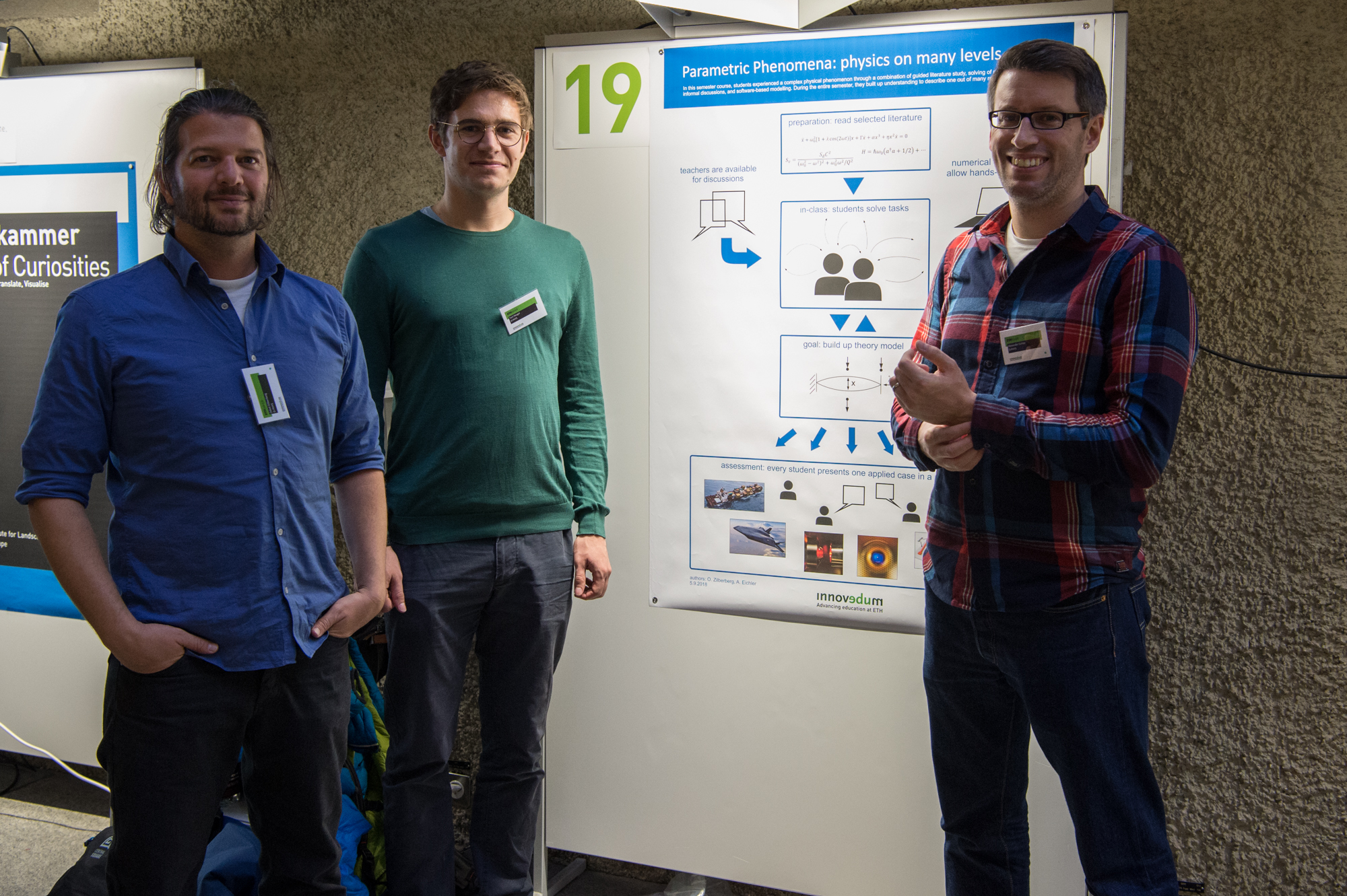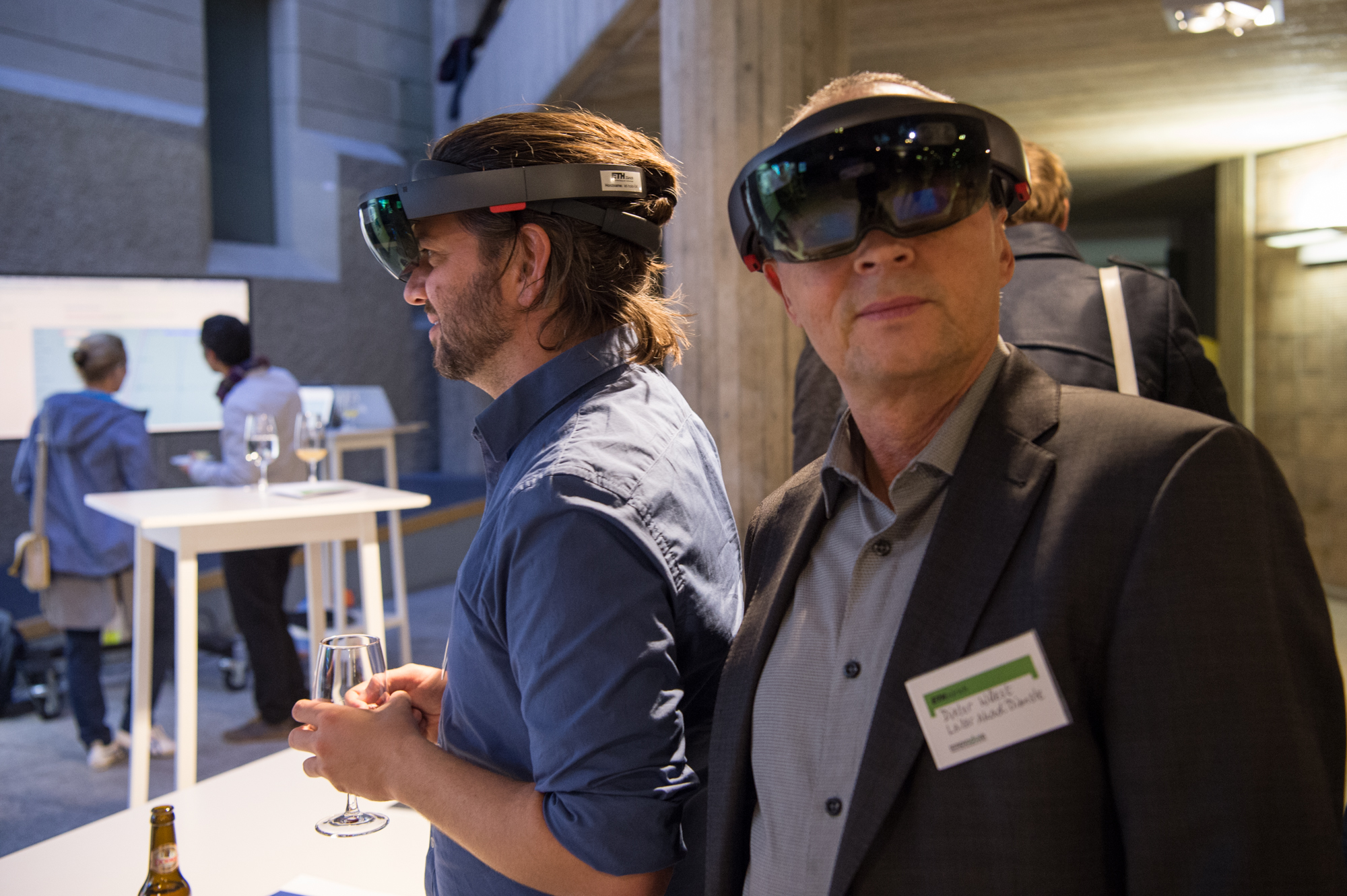Parametric phenomena workshop
Booth #19

We present a flipped classroom approach to teaching parametric phenomena. Through simulated experiments, reading, and guided analytical exercises, the students build a deep understanding of complex nonlinear phenomena that appear across many fields of physics and engineering. In a poster exhibition, each participant showcases one particular manifestation of the very general physical model.
Authors
Antonio Strkalj, D-PHYS, Institute for Theoretical Physics
Dr Alexander Eichler, D-PHYS, Spin Physics
Prof. Dr Oded Zilberberg, D-PHYS, Institute for Theoretical Physics
Abstract
The overall goal of the course was “Students can understand parametric phenomena both theoretically and experimentally”. With this goal in mind, we wanted to let the students experience a “hands-on” taste of the methods used in the analysis of various contemporary physical systems, where parametric phenomena play an important role. We faced the following dilemmas: in order to show the ubiquitous nature of the phe-nomena, we would have to teach the foundations of a wide variety of physical platforms, whereas the course’s focus is on the universal analytical and numerical methods used in the analysis of such systems. Furthermore, many of these methods are covered in well-written books and we did not think that the process of copying information from a blackboard would provide the deep learning experience that we were looking for. Our solution to these dilemmas involved the following course structure: (i) to address the ubiquitous nature of parametric phenomena, each student was given a physical system to analyse during the semester. The student could then apply the universal mathematical and numerical methods taught in the course to his/her system, and share the specific manifestation of his predictions with the rest of the class during the course hours (when working in pairs) and in the final assessment (where each student presented his/her project in a poster session); (ii) the delivery of the course material involved gradual pointed reading of selected chapters in several books and guided exercises during the course hours that emphasized the applicability of mathematical methods. We have provided the infrastructure with which to apply the analytical and numerical methods discussed in the book chapters during the guided course hours. Conceptual topics and challenges were discussed weekly during intermediate consolidation sessions.
We believe that this approach has given our student a wide set of tools that were “deep-learnt” through repetition and exercise. Such a method can be easily adopted by a wide variety of advanced middle-sized courses where the students have already learned some self-teaching skills.

